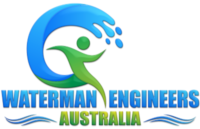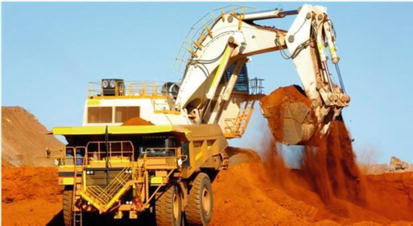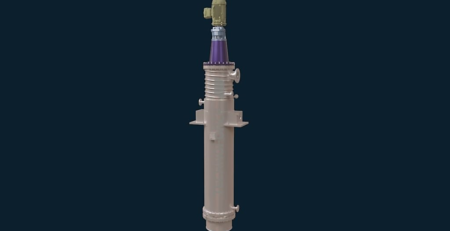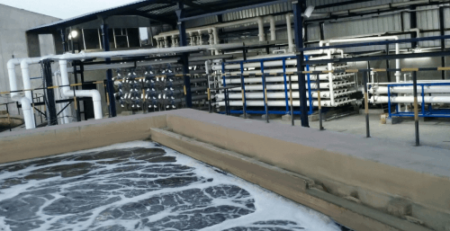Tailing Management Facility (TMF) Design and Operation Considerations
As mining becomes more environmentally sustainable, Tailing Management Facility (TMF) designs and operations are changing. There are several considerations to keep in mind when designing and operating a TMF. Some of these include changes to the way tailings are managed, changes in the TMF’s governance and incorporating recycled water from slurry tailings into the TMF’s processes.
What are Design Considerations for Tailing Management Facilities?
Design considerations for tailing management facilities must be based on best available practices. This means that they must be designed and constructed in a manner that complies with sound industrial practice and meets the needs of the mine.
Tailings facilities are often developed in stages over a period of time. The first stage involves construction of a starter embankment, followed by a series of raises. A second stage involves the creation of a high rate thickener. These systems enable water to be recycled, which can significantly reduce capital and operating costs.
Tailings storage facilities are regulated in Queensland by the Environmental Protection Act 1994. For these facilities, the primary concern is safety. Therefore, any deviations to the approved design must be documented and justified. In addition, requests for changes must be submitted to the same regulatory agency.
Tailings management facilities must be subject to a comprehensive monitoring system, which must be in place to support full implementation of the Observational Method. In addition, tailings facilities must be subject to law-enforced stability analysis.
The Global Industry Standard on Tailings Management has been launched by the International Council on Mining and Metals (ICMM) and the Principles for Responsible Investment (PRI). It is the first global standard for the management of tailings facilities, and can be applied to existing and future tailings facilities.
The ICMM is an alliance of oil sands producers, and it has developed the Standard with input from industry leaders. ICMM member companies will implement the Standard with robust site-level validation and third-party assessments.
Towards Sustainable Mining (TSM) Program
The Towards Sustainable Mining (TSM) program is designed to improve the mining industry’s performance. TSM is based on a framework that includes a set of 30 indicators. Each mine facility must perform an assessment and report its results. These results are verified by third parties. MAC’s online performance reporting system allows companies to share their performance results with all interested parties.
TSM is a global standard that sets high standards for safe tailings management. It provides a consistent path for the industry to follow. While the TSM initiative was developed to protect tailings, it also aims to improve the overall performance of the mining sector.
Currently, over 200 mining associations around the world have adopted TSM. Some of the most prominent associations that have endorsed the program include the Mining Association of British Columbia, Australia, Philippines, Finland, Norway, and Botswana.
TSM is a comprehensive program that has evolved from a site-level assessment to a comprehensive sustainability standard. A TSM award recognizes mining companies, facilities, and individuals that meet or exceed the standard.
The TSM Community of Interest Advisory Panel plays an important role in the evolution of the program. The panel, which is comprised of community and environmental representatives, helps guide the program’s evolution. They identify emerging issues and help develop new policies.
Through a series of workshops and webinars, the Towards Sustainable Mining program provides a range of trainings. Participants will learn about the aims and objectives of the initiative, how to conduct an assessment, and the external verification process.
The TSM Community of Interest Adviser panel is a multi-interest group that provides a forum for engagement with mining communities. The panel includes representatives from Indigenous groups, labour organizations, financial and social NGOs, and other environmental groups.
How to get Recycled Water from Slurry Tailings?
Tailings are an extremely important by-product of the mining industry. They contain valuable water and other materials that can be used for a variety of purposes. However, these materials can only be reused if they are treated to meet environmental standards.
The mining industry produces vast amounts of tailings annually, with a total volume of up to 7 billion tonnes. Although this is an important issue, there is still little research into the recycling of this waste material.
One way to make use of a tailings slurry is to dewater it. This allows the slurry to be transported to an area that is more appropriate for its disposal. Another approach involves reusing the slurry for irrigation. In this case, the slurry is typically dewatered and then sent to a solar drying cell.
The recycling of mine tailings is an important aspect of sustainable mining. It can reduce the number of tailings that must be dumped and drive multidimensional aspects of sustainability in the mining process.
Recycled water from slurry tailings is an important by-product of the oil sands process. It is used as a feedstock in various oil sands processes. But it can also be used for hydro-transport, priming tailings lines, and for dilution of primary separation cells.
A recent study evaluated a tailings dewatering scheme for a tailings slurry containing high sodium silicate. To accomplish this, the study performed semi-industrial tests and evaluated the effectiveness of the system.
The study evaluated the effect of different reagent combinations on the underflow concentration, BHC value, and the settling velocity. Additionally, the study conducted laboratory experiments and evaluated the FS effects of the reagents. APAM and sulfuric acid showed good FS effects.
In addition, newer methods to reduce the slurry volume are being explored. For instance, tailings can be thickened to reduce the volume of the slurry at the disposal site. The use of mine waste for agriculture and construction is another popular application. To be suitable for agriculture, tailings must contain calcium, iron, and other minerals that benefit farmers.
Changes to Tailings Management Governance
Changes in tailings management governance are being made around the world to address the various challenges associated with the mining sector. Tailings storage facilities (TSF)are often an essential part of many mining operations, and must be maintained in a safe and environmentally responsible manner. Mining companies are taking steps to improve their management throughout the life of their assets.
The ICMM Standard is an integrated approach that combines both technical and social aspects. It covers the entire life cycle of a tailings storage facility, from design and construction, through operation and maintenance. There are 77 requirements defined in the standard. It is based on the principles of zero tolerance for human fatalities, and a zero-harm approach to the environment.
The ICMM’s governance framework requires an organisational level of accountability and competency. Tailings specific procedures must be documented and supported by ongoing reviews. Moreover, an Accountable Executive has been appointed to oversee the organization’s compliance with the Standard.
ICMM also promotes continuous improvement in tailings storage facility construction, design, and operation. It has established independent technical review boards at Tarkwa mine and Cerro Corona.
Tailings governance in Chile shows significant progress in terms of technology and regulatory approaches. Although there are still challenges and limitations, the experience in the mining industry in Chile is continuing to be applied and refined.
The Bottom Line
A holistic approach to tailings governance is emerging in recent years. This approach seeks to address the complexity of the various social, economic, environmental, and communication factors involved in a mining project. It must be a comprehensive, innovative strategy with cross-disciplinary and whole-systems approaches.













